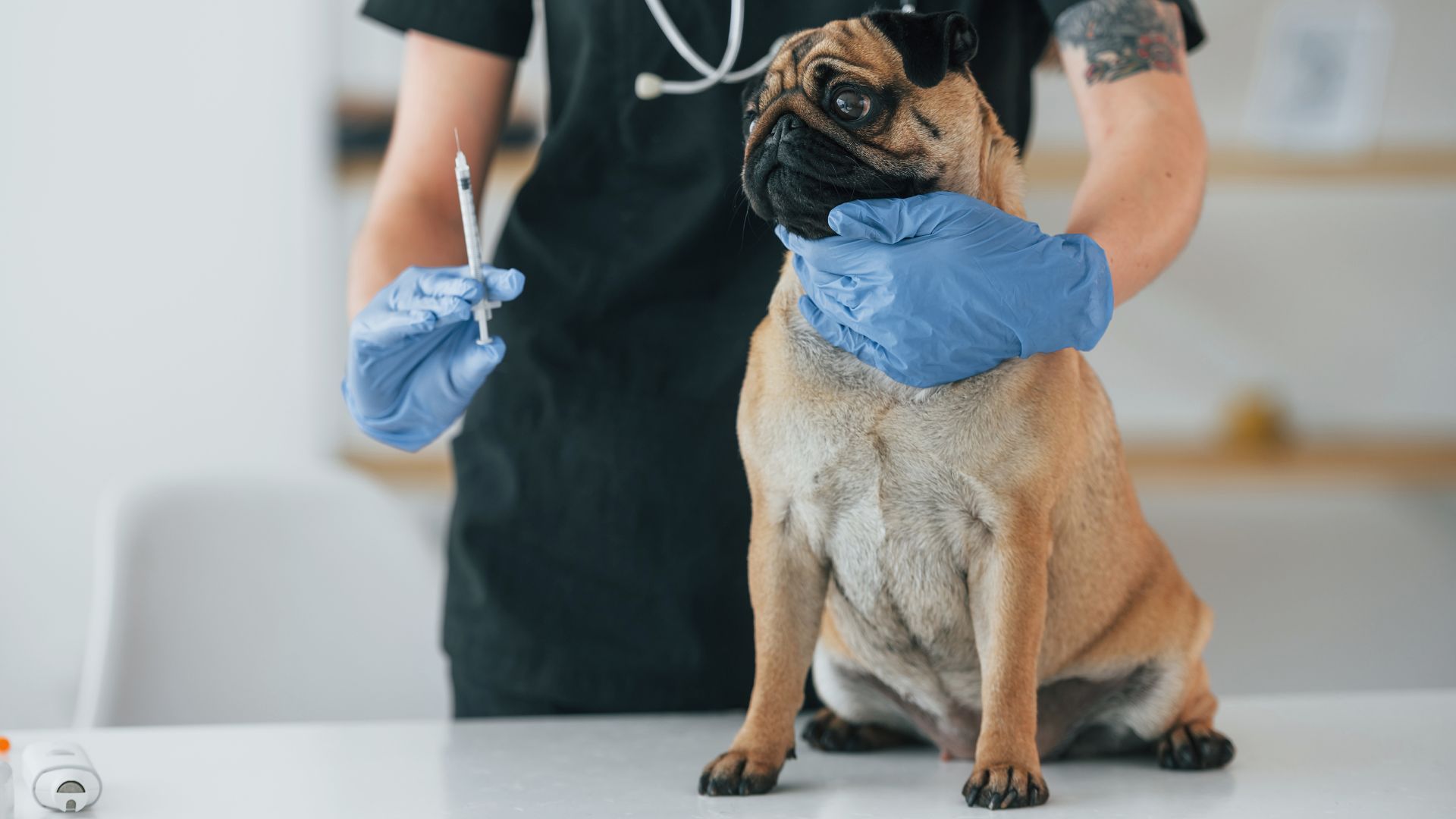They may steal your heart at first glance, but some of the most beautiful dog breeds come with a catch: higher-than-average health risks.
Whether it’s those squishy faces, extra-long backs, or overly refined traits from selective breeding, certain dogs are more prone to vet visits than others. Loving them means being prepared—emotionally and financially—for a little extra TLC.
We’re not here to scare you away from these sweet pups. Many live happy lives with proper care, nutrition, and regular checkups. But awareness is key. If you’re thinking of bringing home a purebred pooch—or already have one of these lovable furballs curled up on your couch—knowing what health issues to watch for is a smart move.
We’ll break down the dog breeds that tend to struggle with health concerns, from chronic joint pain to breathing difficulties and everything in between. These dogs may need more care, but their devotion is unmatched, and with the right support, they can thrive just like any other tail-wagger.
Dog Breeds With The Most Health Issues
1. Siberian Husky

Average Lifespan: 12–15 years
Siberian Huskies are the husky-handsome athletes of the dog world — famous for their stunning wolf-like looks, piercing blue or multicolored eyes, and those signature fluffy tails curled over their backs.
With thick double coats made for Arctic temps, these energetic adventurers thrive on running, pulling sleds, or just zooming around the backyard like it’s the North Pole.
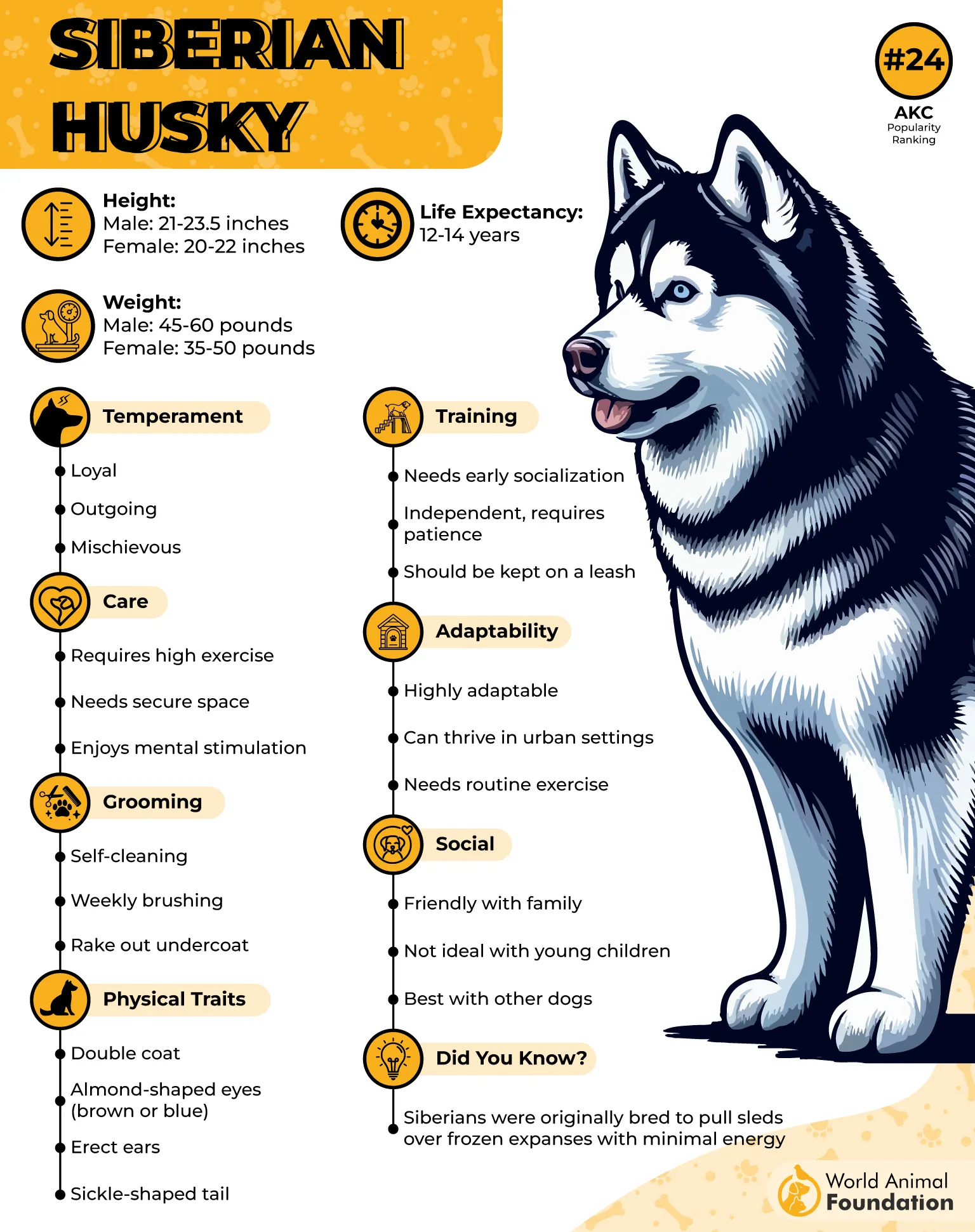
Their friendly, outgoing demeanor makes them great family pets — but don’t be fooled! Huskies have an independent streak and a stubborn sense of humor that means they’ll sometimes test your patience (and your fence).
Huskies are high-energy escape artists with a mischievous streak. Independent, vocal, and drama-prone, they’ll sass you for skipping a walk and serenade you at dinner time. They’re loyal but not clingy, and they’ll always be down for an adventure… or a jailbreak.
As tough as Huskies look, they do have a few health quirks.
Cataracts
Hip dysplasia
Epilepsy
Autoimmune skin disorders
Glaucoma
Corneal dystrophy
But don’t despair! With good nutrition, regular vet check-ups, and a watchful eye, these majestic dogs can lead long, active lives — ready to chase snowflakes and steal hearts for years to come.
2. Bulldog
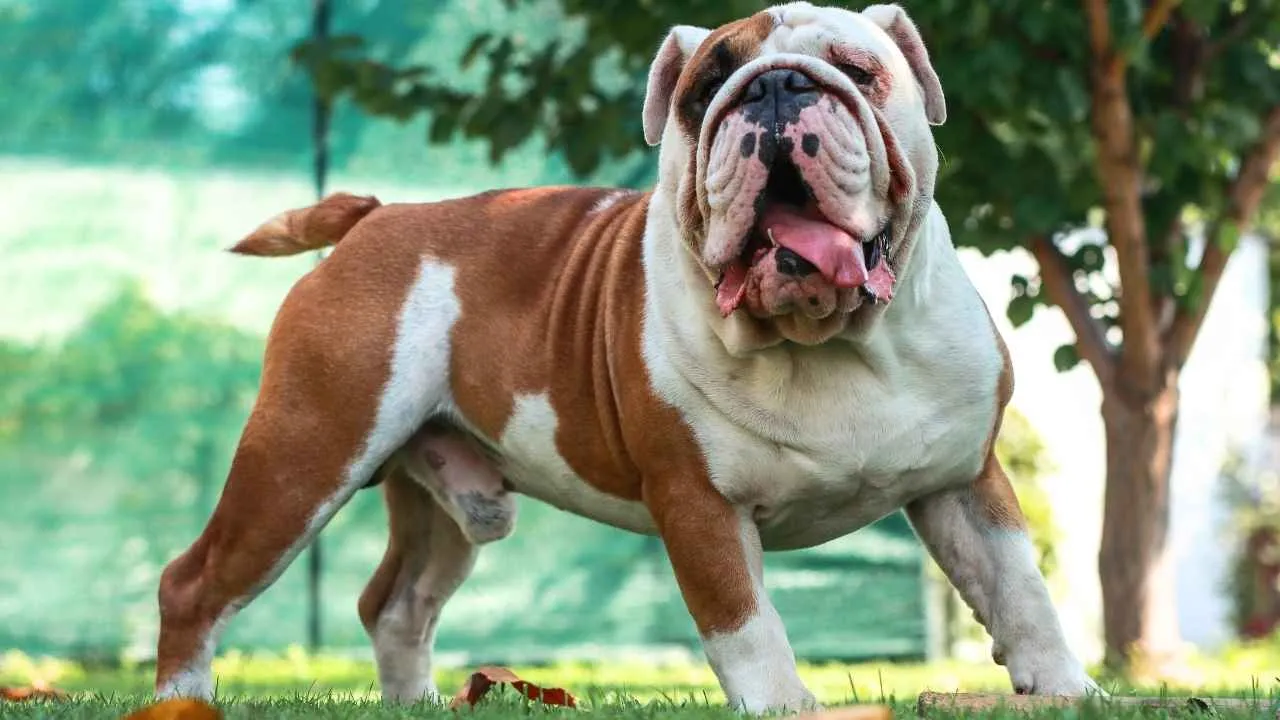
Average Lifespan: 8–10 years
Stocky, wide-chested, and adorably wrinkled, Bulldogs look like they’ve been squished in the cutest way possible. Their short, smushed noses and jowly faces are iconic — and so are their snore levels.
They typically stand about 14 to 15 inches tall and weigh between 40 and 50 pounds. Despite their tough, stocky build, Bulldogs are known for their gentle, affectionate nature and make excellent companions.
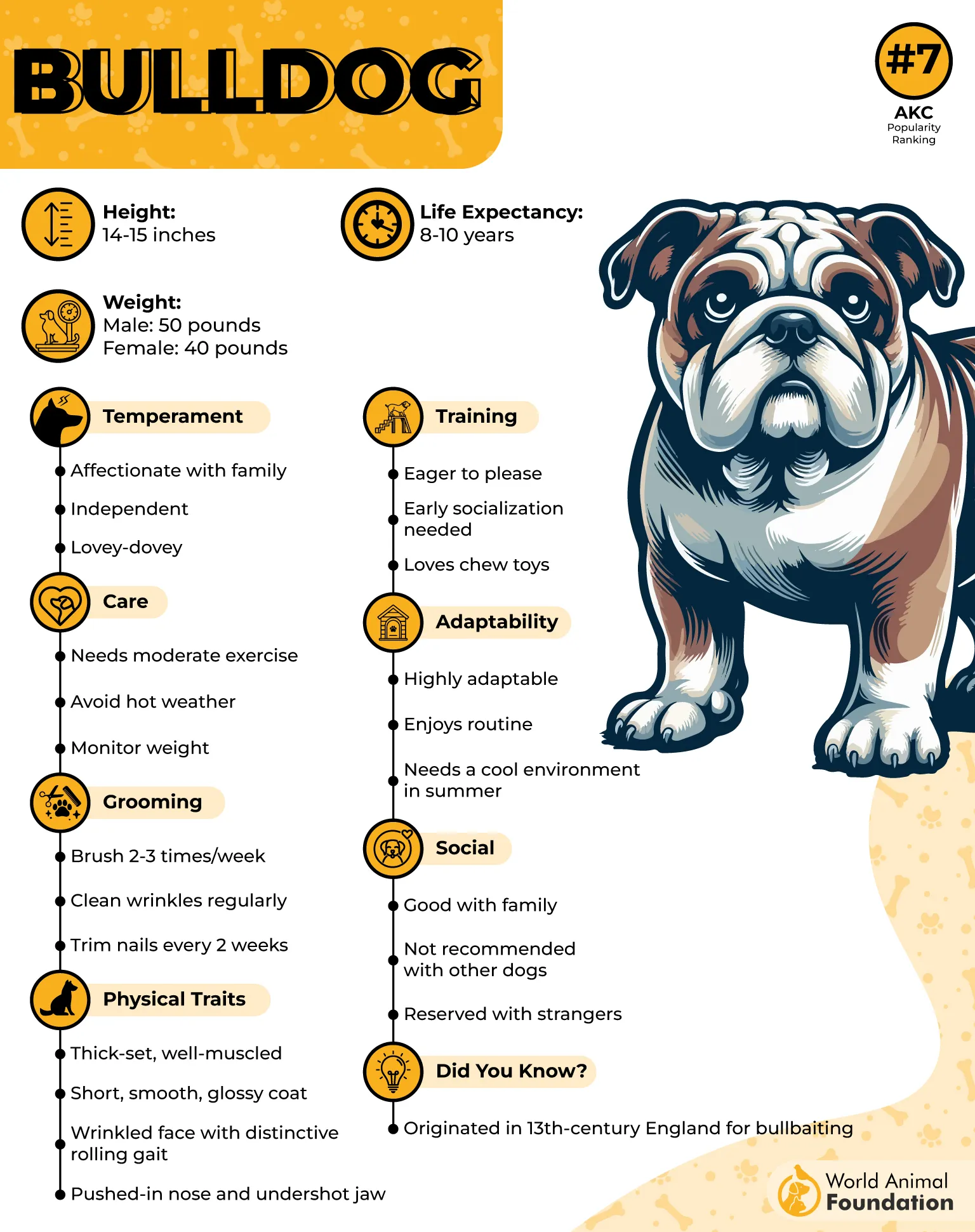
Their slow, steady gait and charmingly grumpy expression make them one of the most beloved breeds for families and city dwellers alike. Bulldogs are affectionate, loyal, and just downright lovable — always ready to chill and snuggle.
However, their unique looks come with some health baggage, such as:
Brachycephalic airway syndrome
Hip dysplasia
Elbow dysplasia
Skin fold dermatitis
Cherry eye
Heat intolerance
They’re relatively low-energy and enjoy short bursts of play, preferring plenty of lounging time. Bulldogs can be a bit stubborn but are incredibly loyal and thrive on human companionship. Their laid-back attitude and loving personality make them great pets for families and city dwellers alike.
3. Pug

Average Lifespan: 12–15 years
Pugs are those pint-sized bundles of joy that steal the show wherever they go. Their round heads, big expressive eyes, and curled tails give them a look that’s as charming as their mischievous, fun-loving personality.
Standing about 10 to 13 inches tall and weighing 14 to 18 pounds, these wrinkly-faced little comedians are impossible to ignore.
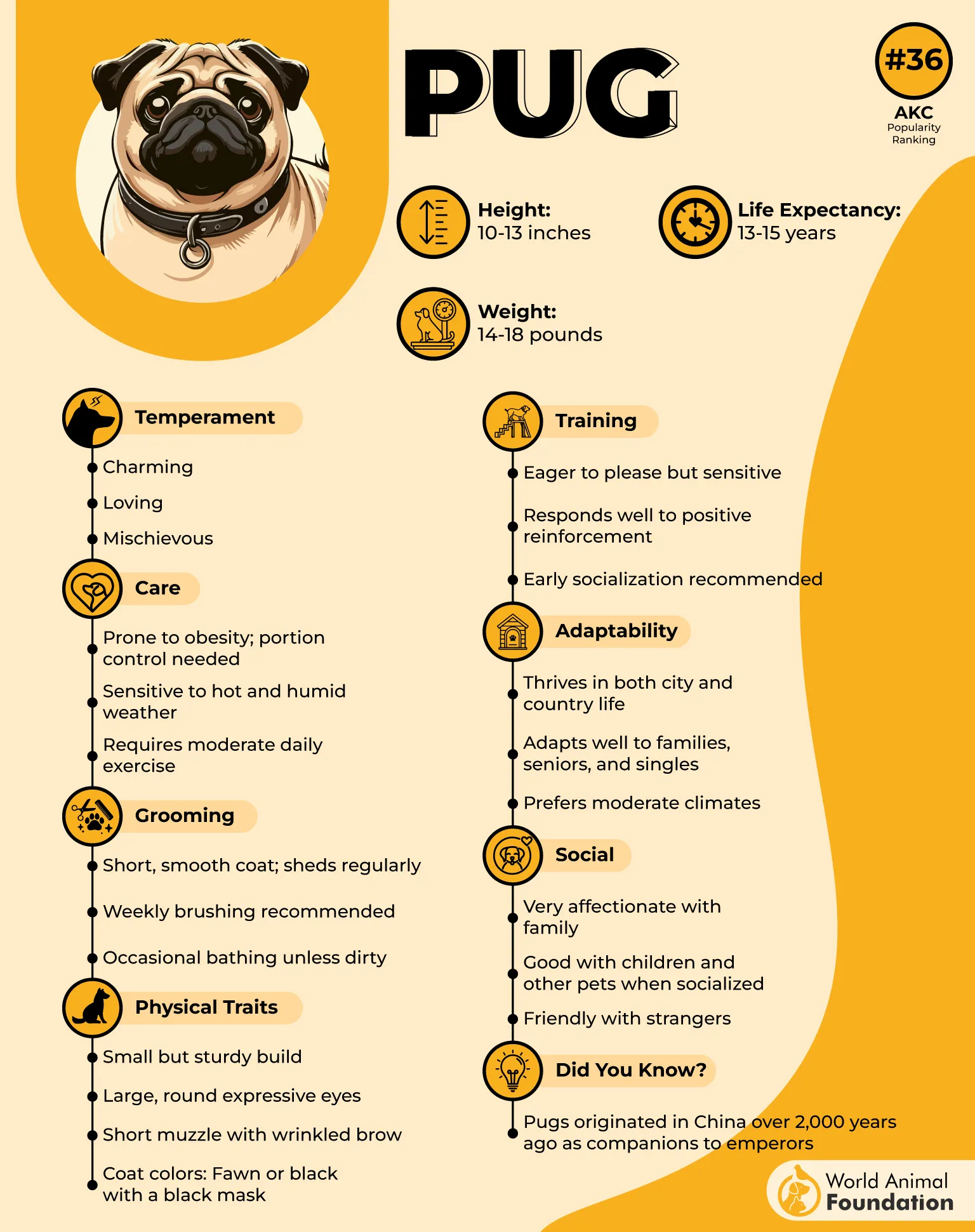
Personality-wise? They’re goofy, attention-loving, and downright obsessed with their humans. Pugs are cuddle bugs with short bursts of zoomie energy. They love companionship and will make themselves comfortable on your lap, bed, keyboard… basically anywhere you are.
Whether it’s goofing around with kids or chilling with adults, these popular dog breeds are versatile family members who thrive on attention and affection.
But these brachycephalic dog breeds come with common health concerns like:
Brachycephalic obstructive airway syndrome
Proptosis (eye displacement)
Corneal ulcers
Hip dysplasia
Obesity
Skin infections
Pugs love being the center of attention and thrive on human company. They’re social, easygoing, and have a knack for making you laugh with their quirky antics.
Though not the most energetic breed, Pugs enjoy short play sessions and plenty of cuddles—just be mindful of their snorting and breathing issues due to their flat faces.
4. German Shepherd
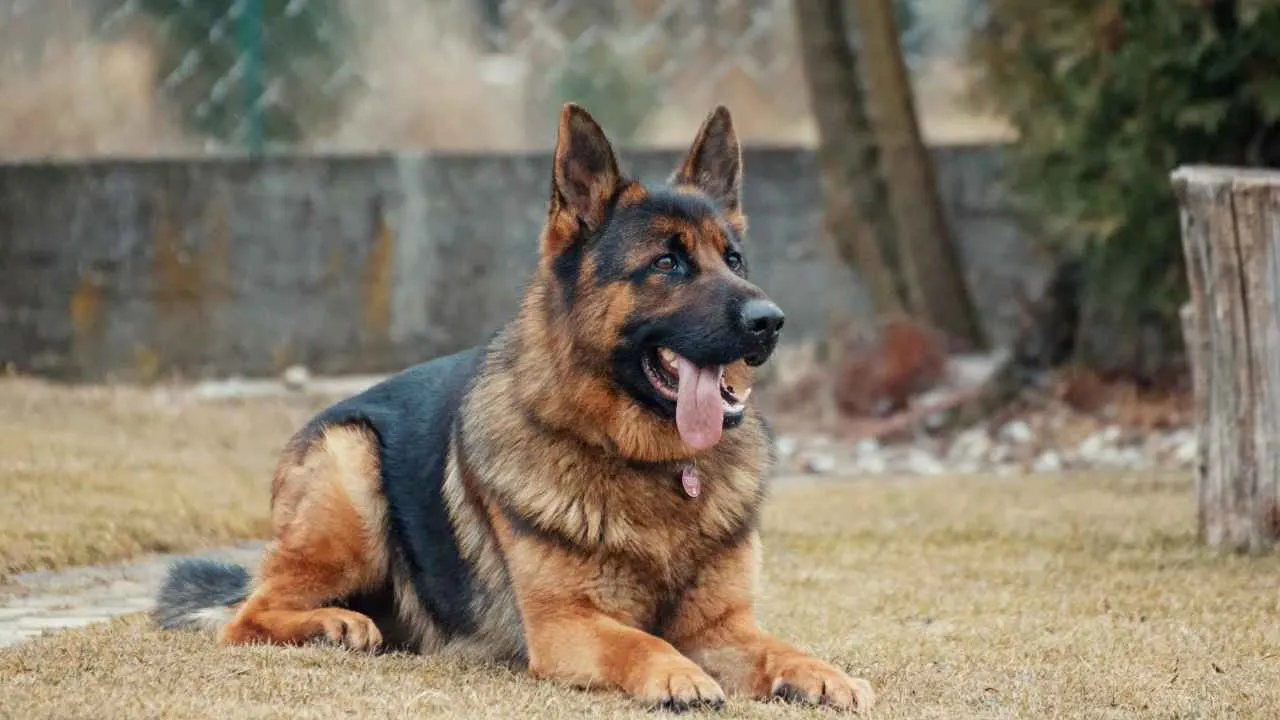
Average Lifespan: 9–13 years
German Shepherds are the all-star working dogs — smart, courageous, and fiercely loyal. Their handsome, muscular build and striking black-and-tan coat give them an unmistakable presence.
Known for their sharp minds, incredible loyalty, and versatility, German Shepherds excel in a variety of roles—from police and military work to search-and-rescue and disability assistance.
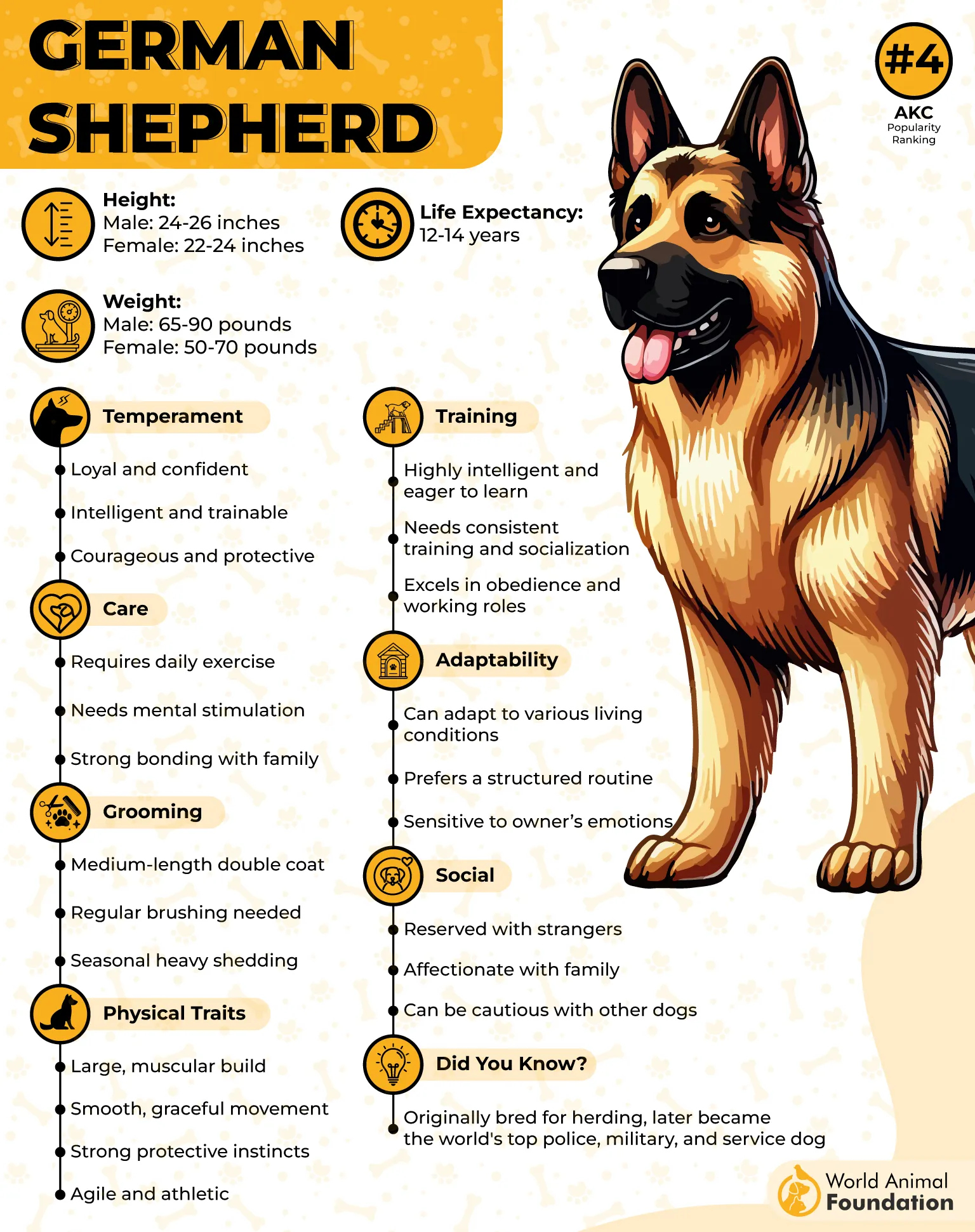
They bond deeply with their family, are eager to work, and love having a purpose. Whether it’s guarding the house or playing fetch, they give 110% to everything… including barking at suspicious squirrels.
However, their size and athleticism come with some common health issues.
Hip and elbow dysplasia
Degenerative myelopathy
Bloat (gastric dilatation-volvulus)
Exocrine pancreatic insufficiency (EPI)
Allergies
They’re courageous and protective, making them excellent family guardians. As per Wikipedia, they’re reserved around strangers, they bond deeply with their families, and thrive when given plenty of physical exercise and mental challenges.
If you want a smart, hardworking companion who’s always ready for action, the German Shepherd is a top pick.
5. Labrador Retriever

Average Lifespan: 10–12 years
Labs are the all-American happy-go-lucky pals everyone loves. Their athletic build, expressive eyes, and friendly demeanor make them perfect family companions and top-notch working dogs.
Labradors are medium to large dogs, usually standing 21.5 to 24.5 inches tall and weighing between 55 and 80 pounds. They have a strong, athletic build with a short, dense coat that’s perfect for water-loving adventures.
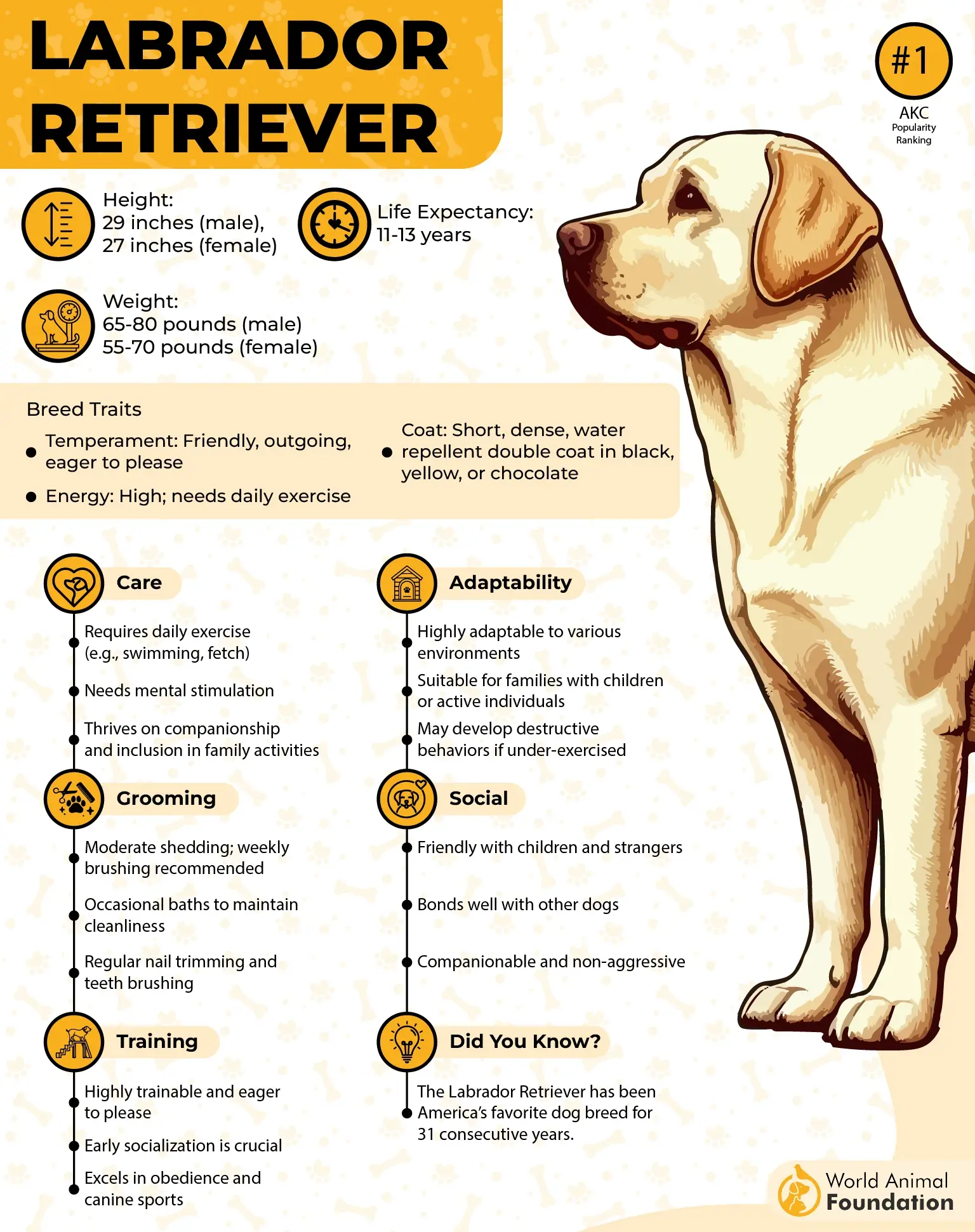
Labradors are known for their gentle and patient nature, making them outstanding companions for children and earning them a reputation as one of the best family dogs. Their intelligence and eagerness to learn allow them to excel in obedience, as well as in roles like service work, therapy, and hunting.
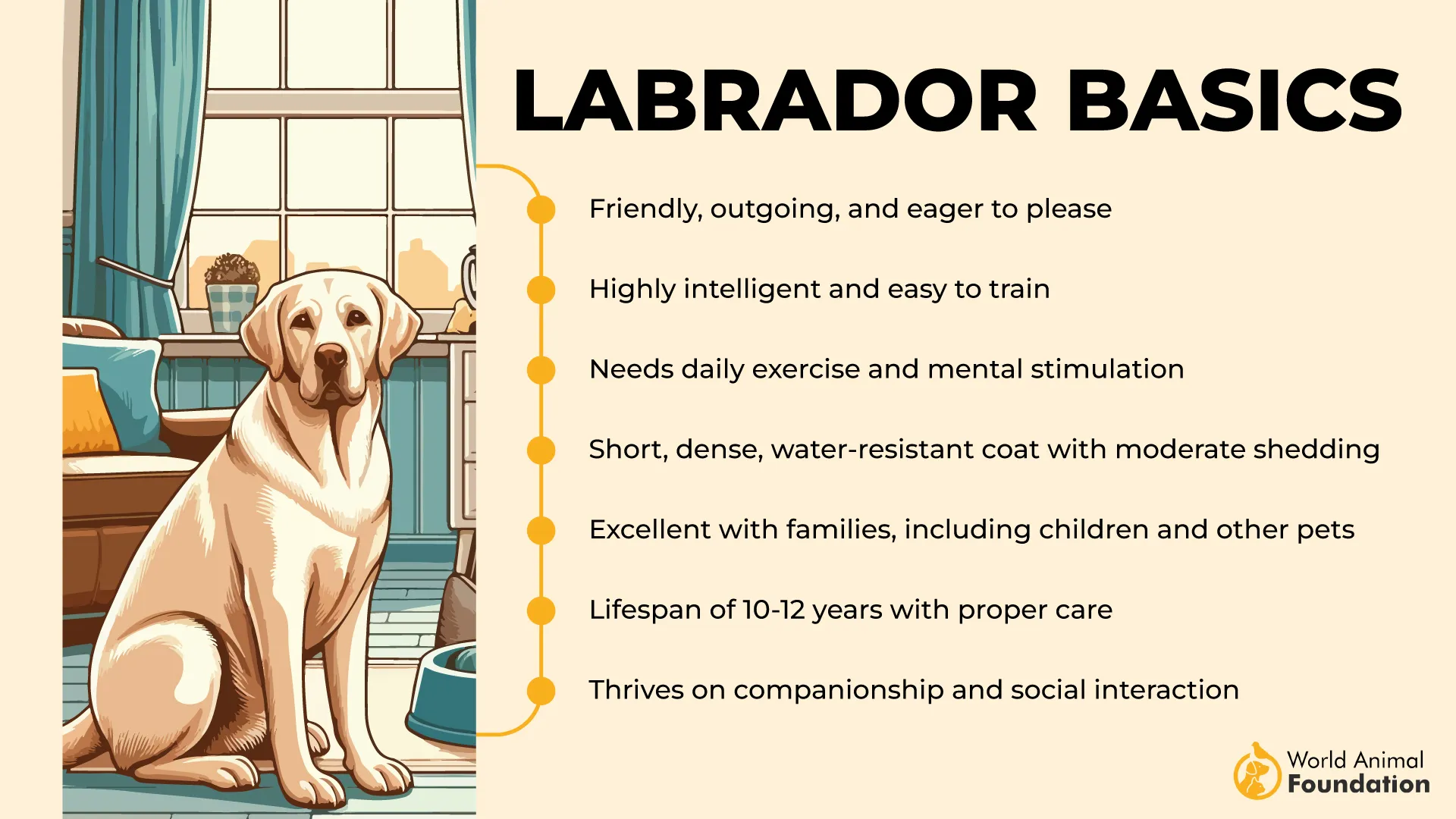
Labradors are generally healthy dogs, but like all breeds, they can be prone to certain health concerns. Here are some of the more common ones to watch out for:
Hip and elbow dysplasia
Obesity
Heart disease
Progressive retinal atrophy (PRA)
Exercise-induced collapse
Labs thrive on interaction and absolutely live for games, swimming, and exploring. Whether yellow, chocolate, or black, their outgoing attitude and gentle spirit win over everyone they meet. Whether retrieving balls at the park or guiding someone through daily life as a service dog, Labs bring enthusiasm and warmth everywhere they go.
6. Beagle

Average Lifespan: 12–15 years
Beagles are the quintessential scent hounds — small but mighty, with big floppy ears and expressive eyes that seem to say, “What’s that smell?” These muscular dogs have boundless energy and a playful spirit, making them great family companions and enthusiastic explorers.
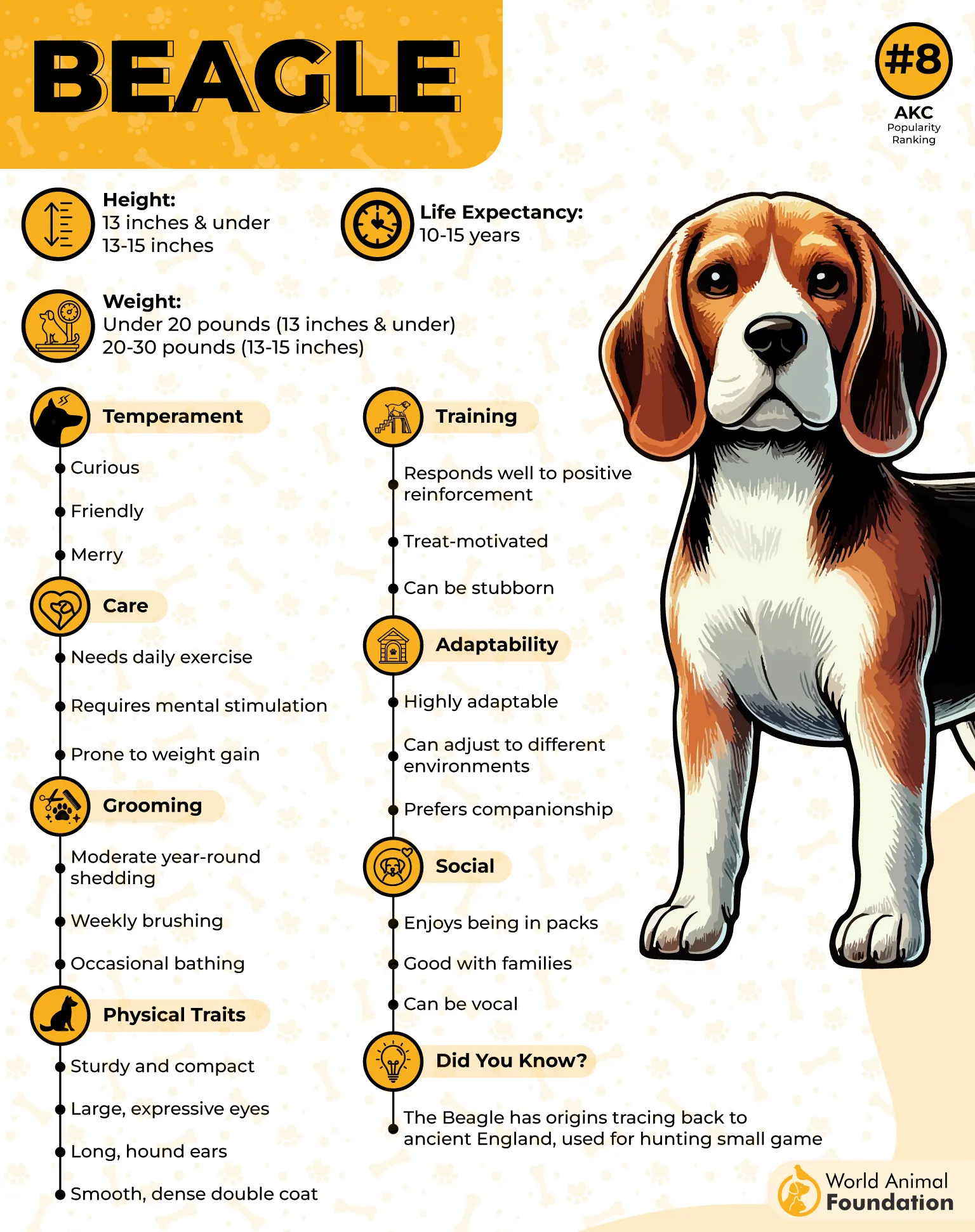
Beagles are cheerful, affectionate, and often stubborn, but their playful nature makes them great with kids. They crave companionship, whether it’s with people or other dogs, and they thrive in homes where they get plenty of exercise and attention.
Their keen noses lead them into all kinds of adventures, but this curiosity also means they can be prone to certain health issues like:
Epilepsy
Hypothyroidism
Hip dysplasia
Ear infections
Intervertebral disc disease (IVDD)
But with regular vet visits and a watchful eye, Beagles can enjoy many happy, tail-wagging years. Beagles are fantastic companions for families and active owners, but they do require plenty of exercise and attention.
Their short coat is low-maintenance and easy to care for, so grooming is a breeze compared to the effort needed to keep them physically and mentally engaged.
7. Shih Tzu

Average Lifespan: 10–16 years
Shih Tzus add a touch of royalty to any household with their luxurious coats and warm, affectionate demeanor. Their gentle, loving temperament makes them ideal companions for both children and adults who appreciate a snuggly and loyal friend.
Originating in China, the Shih Tzu is thought to be a cross between the Pekingese and the Lhasa Apso. Interestingly, their name means “lion” in Chinese.
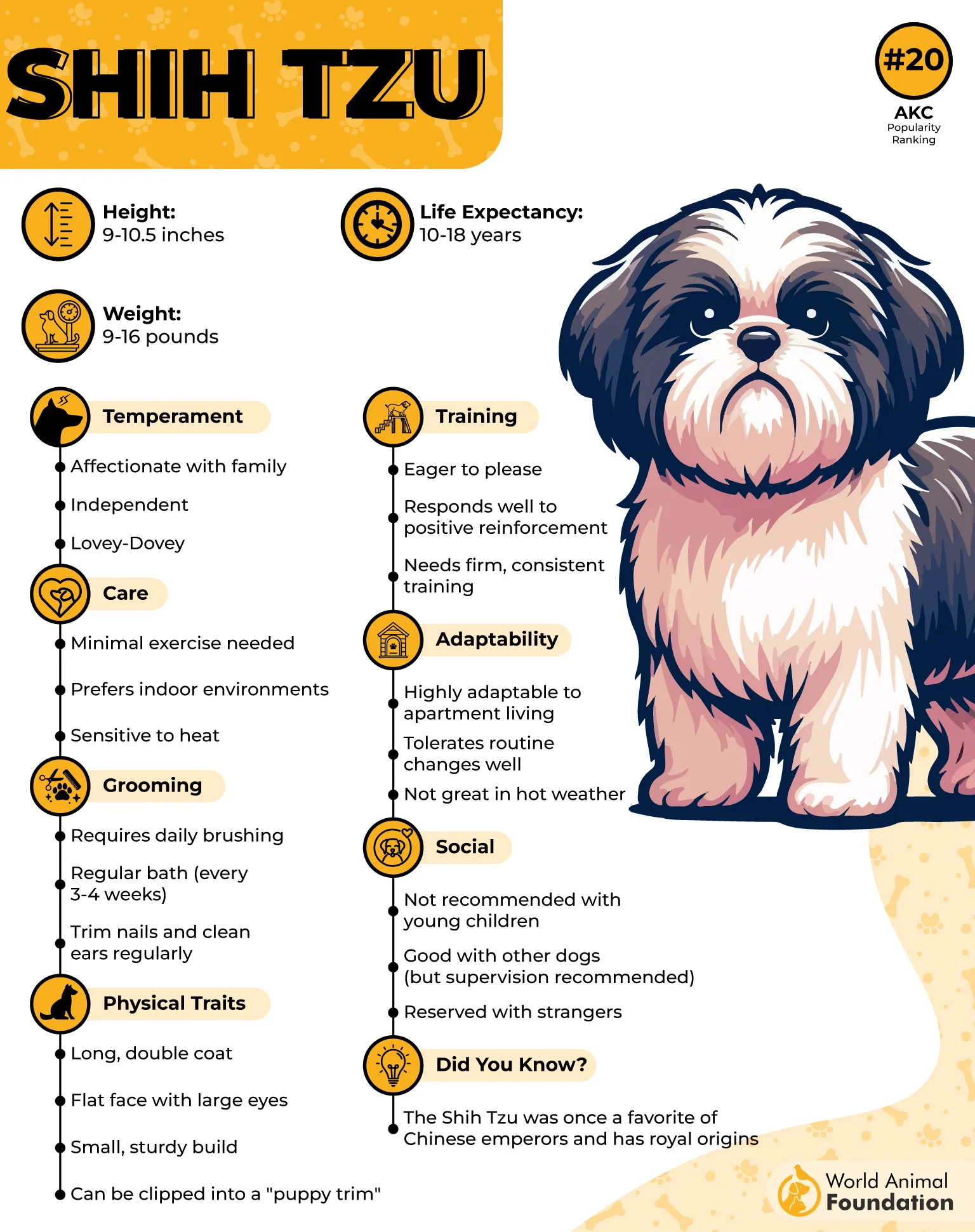
These small pups usually weigh between 9 and 16 pounds and stand around 8 to 11 inches tall. Thanks to their compact size, Shih Tzus are well-suited for homes of all sizes, according to WebMD. Just be sure they have enough room to play and stay happy.
Shih Tzus are calm and adaptable, making them excellent lapdogs for families, seniors, and apartment dwellers. They enjoy a bit of play, but their true talent lies in relaxation and looking cute while doing absolutely nothing.
Shih Tzus are charming little companions, but like many small breeds, they can be prone to certain health problems, including:
Brachycephalic airway syndrome
Periodontal disease
Luxating patellas
Anal gland impaction
Eye diseases (dry eye, cataracts, progressive retinal atrophy)
With attentive grooming, routine vet care, and plenty of love, Shih Tzus thrive as happy, healthy companions.
8. Boxer

Average Lifespan: 10–12 years
Boxers are muscular, medium-to-large dogs known for their boundless energy, affectionate nature, and goofy antics. Their expressive faces and soulful eyes can melt anyone’s heart, and their playful demeanor makes them fantastic family dogs, especially for active households.
They typically stand between 21.5 and 25 inches tall at the shoulder and weigh around 55 to 70 pounds, with males generally larger than females. Their bodies are square and muscular, built for power and agility.
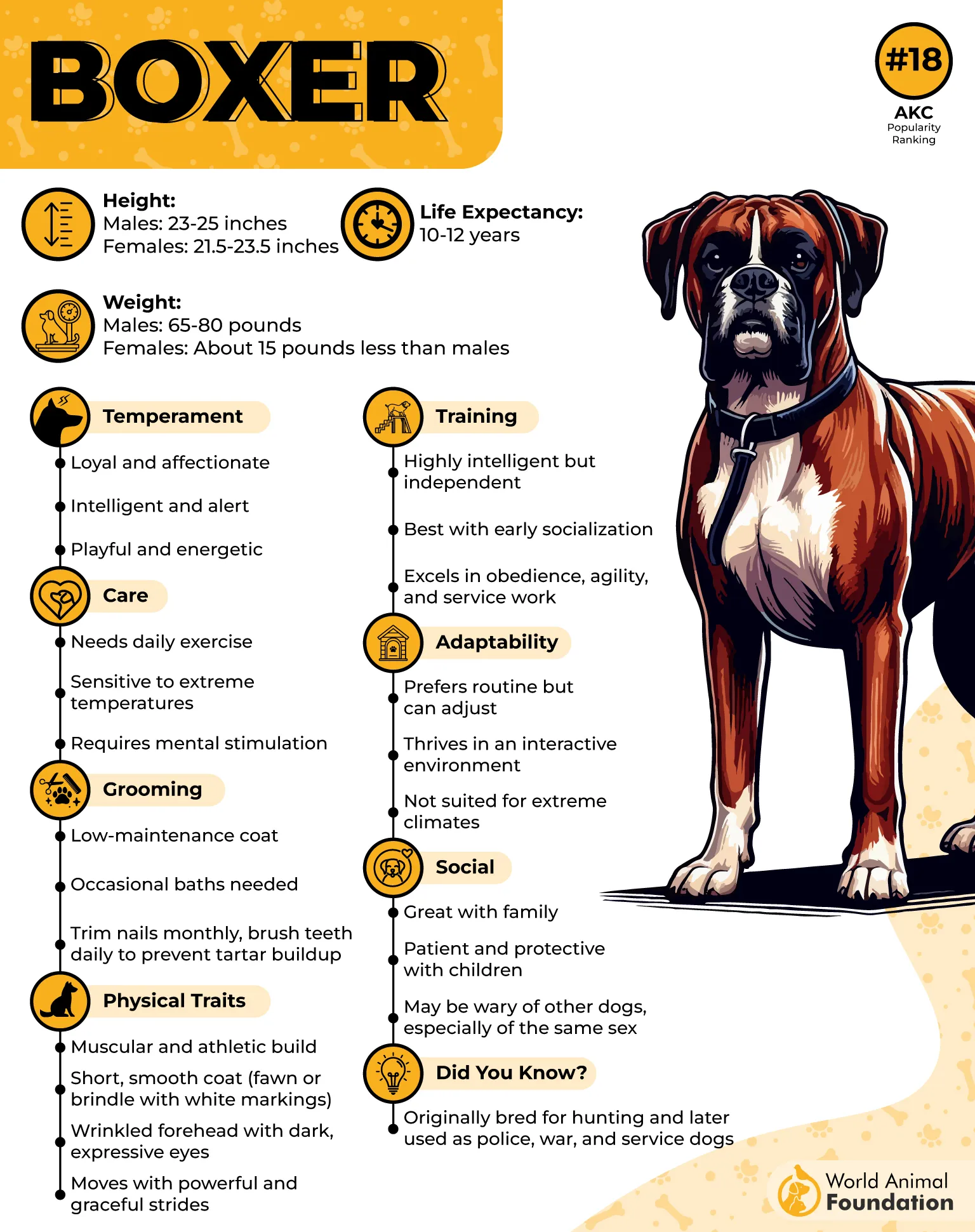
These dogs are full of energy, affection, and goofball behavior. Boxers are incredibly loyal and protective, but also playful and silly. They form deep bonds with their people and are great with kids, often acting like oversized toddlers themselves.
Their strong presence is matched by a heart of gold. Boxers are energetic and loving dogs, but they can be prone to common health problems, including:
Cancer (especially lymphoma and mast cell tumors)
Heart conditions (aortic stenosis, cardiomyopathy)
Hip dysplasia
Hypothyroidism
Allergies
With a healthy diet, regular exercise, and routine vet care, Boxers can live strong, happy lives full of fun and affection.
Boxer vibe: “I’m tough when I need to be, but mostly I’m your goofy best friend ready to play fetch ‘til the sun goes down.”
9. Dachshund

Average Lifespan: 12–15 years
Dachshunds may be small, but don’t let their size fool you. They have a distinctively long body and short legs, earning them the nickname “wiener dog.” But don’t let their comical shape fool you — they’re bold, curious, and full of personality.
They usually stand about 8 to 9 inches tall and weigh between 16 and 32 pounds, depending on whether they’re standard or miniature size. Their unique shape was originally bred for tracking and hunting badgers, making them brave and determined little hunters.
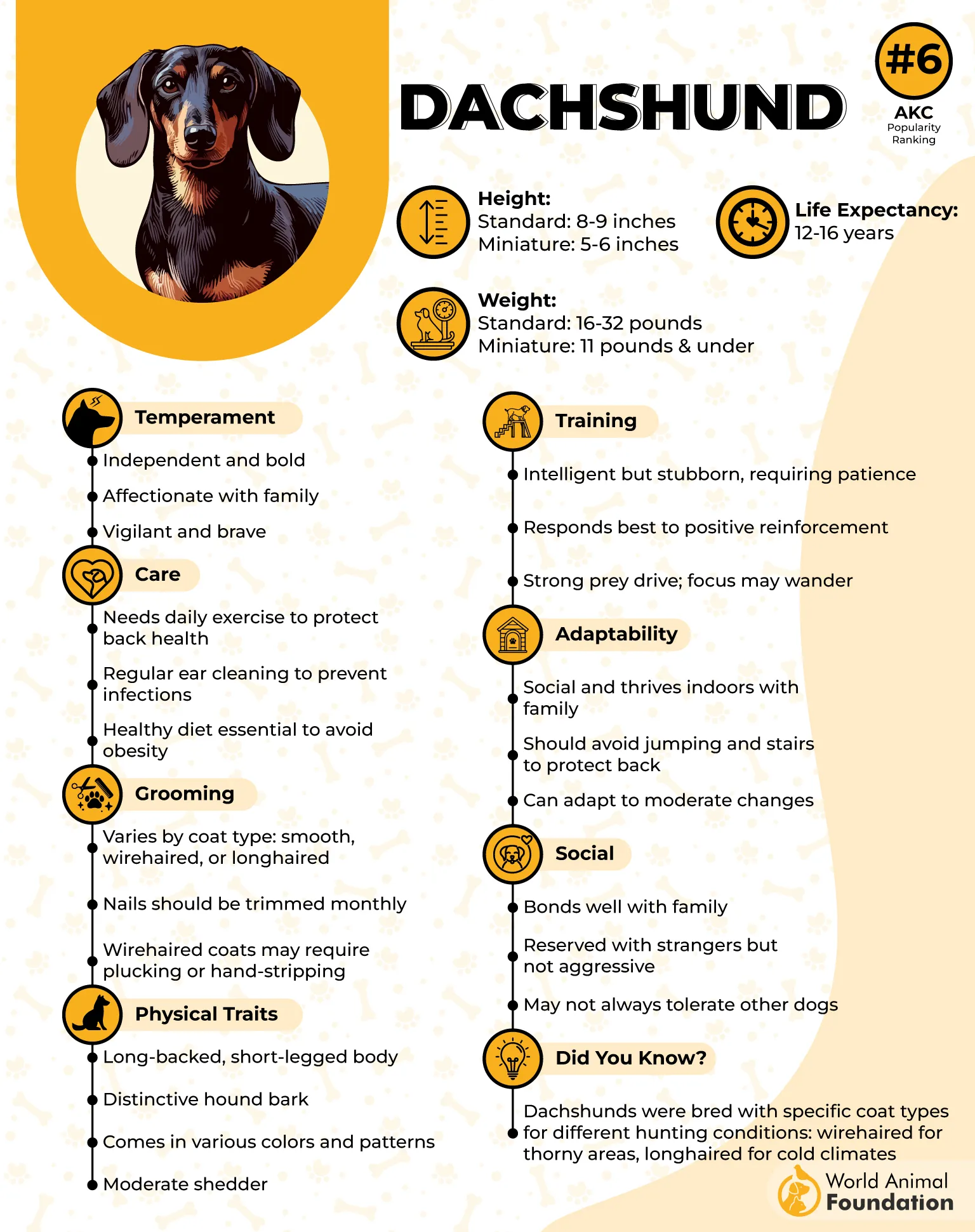
These little hounds are surprisingly brave and often act like much bigger dogs. They’re loyal to their families, though a bit wary of strangers, and they love to burrow under blankets or nap in sunspots. Despite their stubborn streak, they’re affectionate and clever — and oh-so entertaining.
While generally healthy, Dachshunds have a few health challenges to keep an eye on.
Intervertebral disc disease (IVDD)
Obesity
Patellar luxation
Progressive retinal atrophy (PRA)
Cataracts
Glaucoma
With good vet care and a watchful owner, your Dachshund can enjoy a long, happy life full of tail wags and zoomies.
These playful and affectionate dogs love mental challenges like puzzle toys and scent games. However, because of their long backs, it’s important to be careful with high-impact activities to avoid injury. Dachshunds make loyal and lively companions who bring a big heart into a small package.
10. Cocker Spaniel

Average Lifespan: 12–15 years
Cocker Spaniels are the ultimate cuddle buddies, known for their soft, expressive eyes and silky ears that make every head tilt irresistible. They’re affectionate, gentle, and eager to please, making them wonderful family companions.
Cocker Spaniels are medium-sized dogs known for their expressive, soulful eyes and beautiful, silky coats. They typically stand about 13.5 to 15.5 inches tall and weigh between 20 and 30 pounds. With their floppy ears and cheerful demeanor, they’re hard to resist.
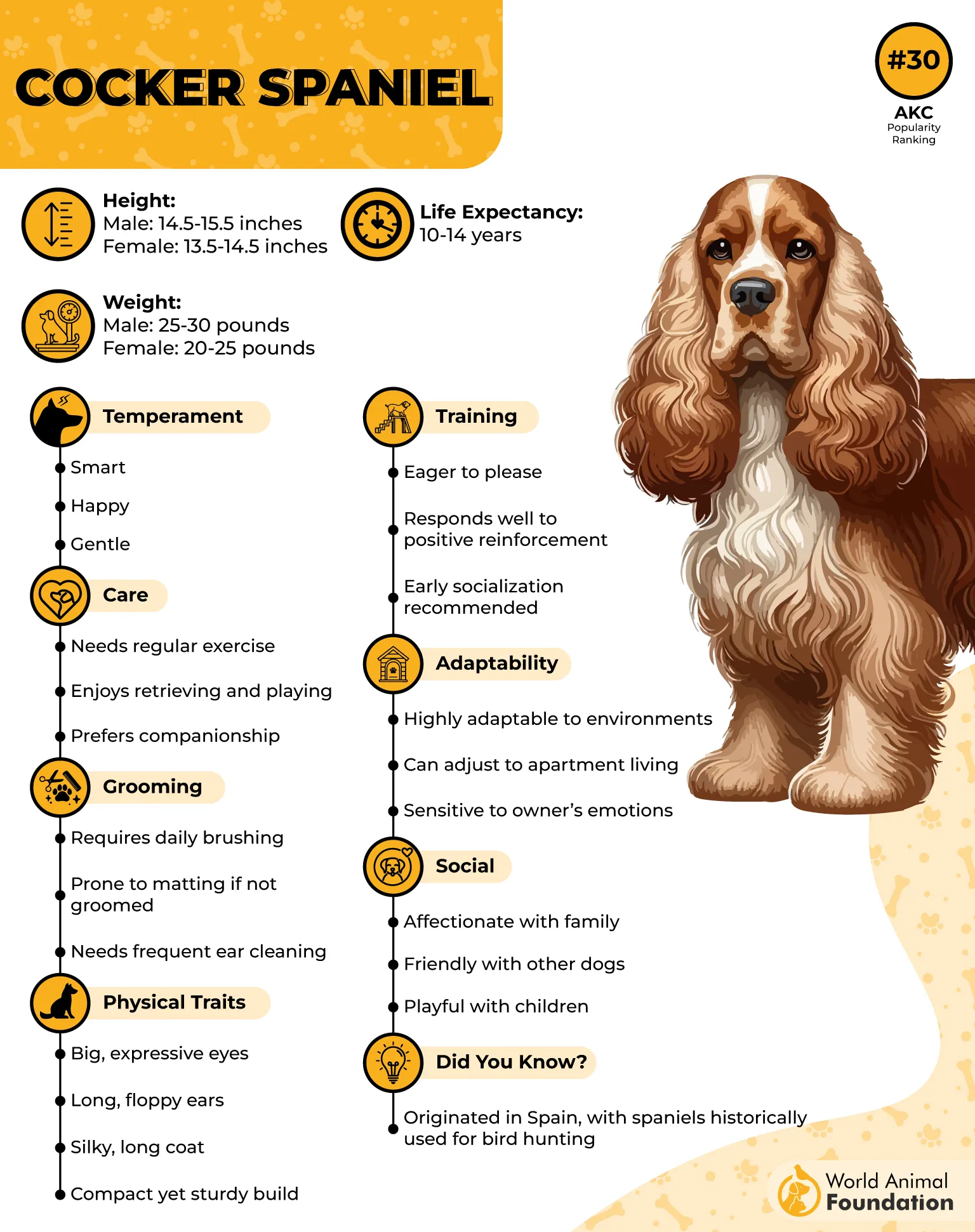
These dogs are affectionate, friendly, and love being part of the family. They’re also quite intelligent and eager to please, making training a joy. Cocker Spaniels enjoy plenty of playtime and socializing, thriving in active households that give them both mental and physical stimulation.
While generally healthy, Cocker Spaniels can be prone to a few common health challenges.
Hip dysplasia
Ear infections
Skin allergies
Progressive retinal atrophy (PRA)
Their stunning coats require regular grooming to keep them looking their best, but the affectionate companionship they offer makes it all worthwhile. With proper care, these lovable pups will stay by your side with their joyful spirit for many years to come.
Conclusion
When it comes to the most unhealthy dog breeds, genetics play a huge role. Purebred dogs, while beloved, often face breed-specific health issues like mitral valve disease in Cavalier King Charles Spaniels, respiratory problems in brachycephalic breeds like the French Bulldog and Boston Terriers, and spinal problems in toy breeds and Dachshunds. Large breeds and giant breeds, such as Mastiff breeds, are prone to hip dysplasia and life-threatening conditions linked to their size. Miniature Schnauzers often struggle with urinary tract infections and liver disease, while Yorkshire Terriers can suffer from dental disease and food allergies.
Fortunately, veterinary medicine, proper nutrition, pet insurance, and routine care—like scheduling checkups, maintaining a healthy weight, and treating skin conditions—can extend your dog’s lifespan and support their well-being. Even mixed-breed dogs, while generally healthier, aren’t immune to genetic factors and should be monitored for health conditions. From ensuring your dog can pump blood effectively to prevent ear infections, keeping an eye on your dog’s body is key to a healthy life.


